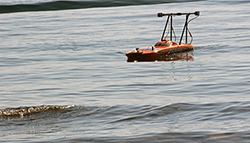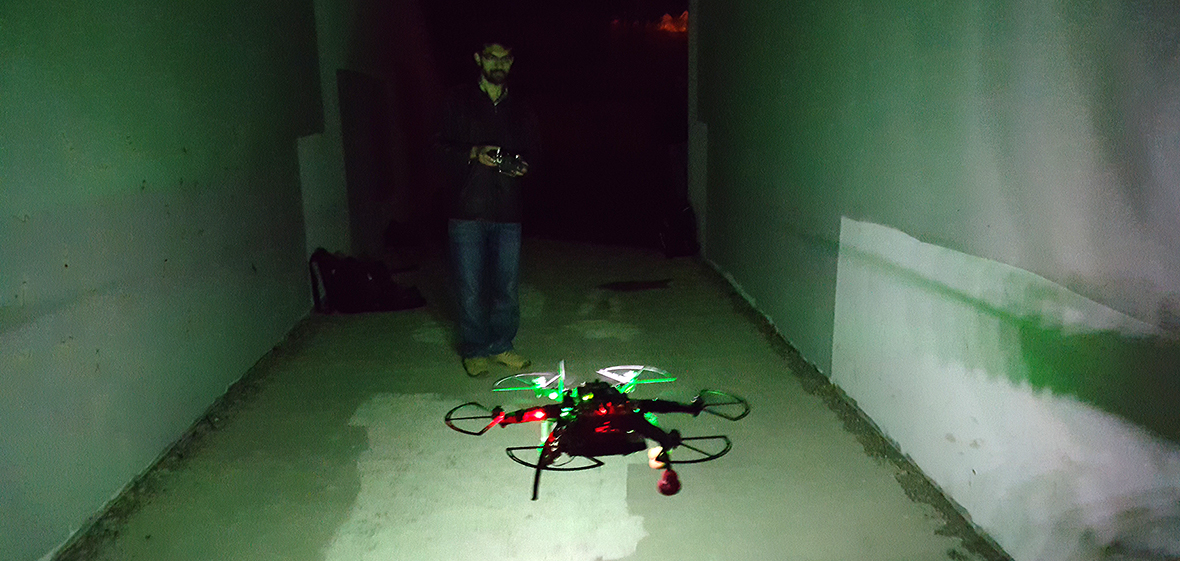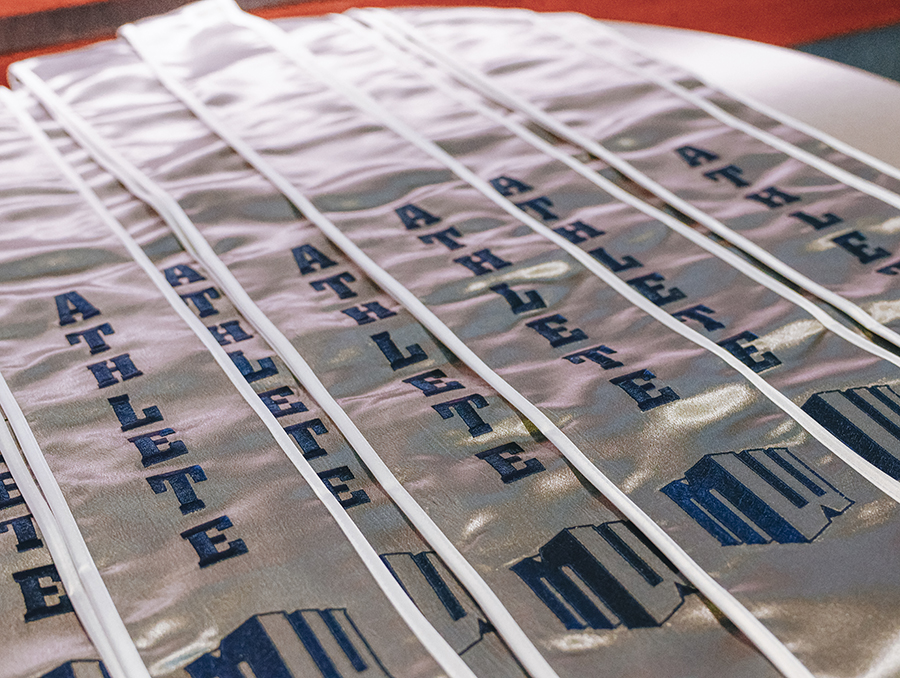Designing and building cutting-edge technology for mobile robots is required coursework at the University of Nevada, Reno's new Autonomous Mobile Robot Design class. Part of the new unmanned autonomous systems minor program, the course develops fundamental knowledge in robotics and engages undergraduate and graduate students in cutting-edge research.
"This is a hands-on, project-driven course," Kostas Alexis, assistant professor in the Computer Science and Engineering Department, said. "Projects are designed to solve real-world problems and challenges. The students worked in teams and came up with practical, usable solutions being applied to real-life issues."
The inaugural robot design class in the Fall of 2016 had 35 students. They were divided into teams that created an autonomous boat for algae detection in Lake Tahoe, a sensing system for tunnel monitoring with aerial robots, a buggy with traffic sign detection, a small quadrotor helicopter and a sensing system for environmental monitoring using a fixed-wing autonomous aerial vehicle.

"All of these applications are integrated into actual research projects, the students solutions were based on real requirements of federal agencies or the needs of specific industries," Alexis said. "The students were engaged and enthusiastic. They had several design problems to address, which, for me, made it fun – and challenging – at the same time."
Some of the students focused on perception, others on control systems, robots or sensing systems – bringing it all together as a team. Details about the course projects are on the Autonomous Robots Lab website: http://www.autonomousrobotslab.com/semester-projects.html.
{{RelatedPrograms}}
The course introduces students to the holistic design of autonomous robots – from all-encompassing mechatronic design to sensors and intelligence using five teaching blocks:
a) actuation and robot locomotion,
b) sensing and robot perception,
c) control and robot guidance,
d) motion planning and autonomous navigation, and
e) remote control and robot user interfaces.
"Robotics is a multi-disciplinary science; this course asks students to be specific and pioneering in their sub-discipline, but also capable to deal with a holistic design process," Alexis said. "After all, unmanned autonomous systems by their nature are a consolidation of technology to address various scientific and engineering issues, which makes this course a natural for the UAS minor."
There are now nearly 50 engineering students officially pursing the minor degree, and since the program began in 2013 there have been 15 students who earned the degree.
The autonomous robot design course is one of about 25 existing courses from which students can choose to fulfill the requirements of a UAS minor degree. About a dozen professors are teaching courses that are a part of the curriculum for the minor, which requires 18 credits of coursework. The UAS minor degree program continues to grow as new technologies are developed.
"Expanding the curriculum is important to stay at the forefront of research and education in the UAS field," Indira Chatterjee, associate dean of the College of Engineering said. "Dr. Alexis’ course is a wonderful addition to the UAS Minor, and we're planning for more courses to come next school year."











